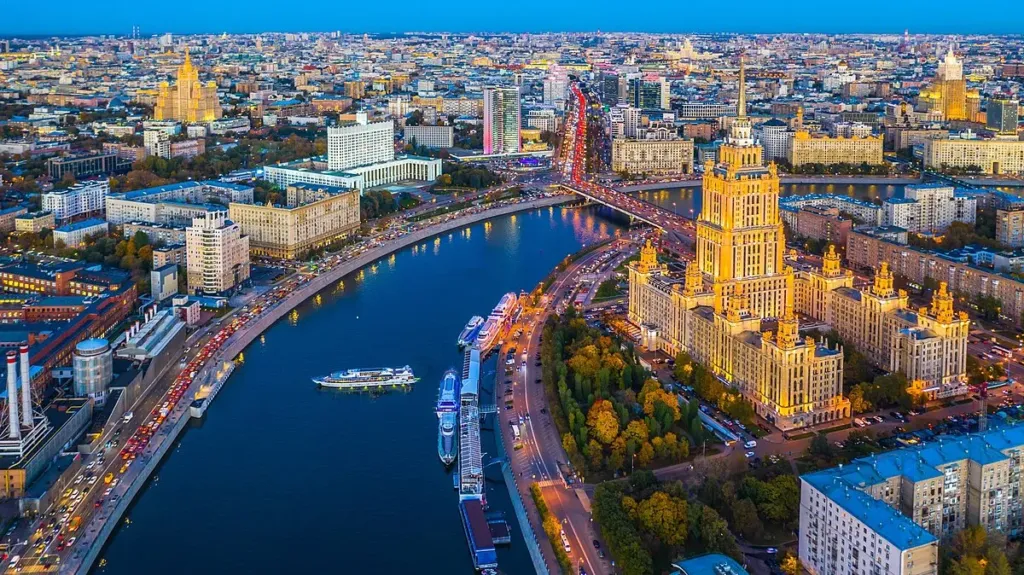The name “Moscow” comes from the Moskva River. One version translates it as “wet” or “marshy,” reflecting the terrain of early settlements. Another suggests “bear river” from ancient Finno-Ugric roots.
Moscow was first mentioned in chronicles in 1147, making it older than Berlin or Madrid.
Its area is about 2,511 km² — larger than Luxembourg and nearly the size of Cyprus.
Population exceeds 13 million — more than Greece or all Baltic countries combined.
The Moscow Metro carries around 9 million passengers daily — more than Austria’s population. During rush hour, trains run every 90 seconds — a global record.
There are over 1,000 rivers, streams, and springs in Moscow, most flowing underground. The Neglinnaya River was tunneled in the 18th century.
Moscow ranks among the world’s top ten megacities. It hosts over 80 billionaires — one of the highest concentrations globally.
The Kremlin, built in the 14th century, is now the presidential residence — a rare blend of history and power.
The “Seven Sisters” — Stalin-era skyscrapers — define Moscow’s skyline with their symmetrical grandeur.
Europe’s tallest skyscraper, Federation Tower East (374 m), stands in Moscow City — taller than the Eiffel Tower and nearly as high as the Empire State Building.
Lenin’s Mausoleum on Red Square is one of the few places where a preserved leader’s body is publicly displayed.
Moscow State University is one of Europe’s largest. Its main building was the tallest in Europe until the 1990s.
Moscow is a city of contrasts: ancient churches beside futuristic towers, monuments to cosmonauts and writers lining the streets.
- Derbent (Dagestan, Russia)
- 24 Facts About The Colosseum
- Paradise for Sea Lovers: World Regions with the Most Swimming Beaches
- Pirate places of the world: where to travel for seafaring legends
- Kamchatka
- Sydney
- Around Baikal by Car: A Grand Loop of Siberia’s Inland Sea
- Tragic Geography: Tourist Sites with the Highest Death Toll
- Los Angeles
- Tsunami in Sri Lanka: the tragedy that changed tourism
- Tourist view on the history of the Basmachi: traces of the past in travels across Central Asia
- Everyone says i’m running away
- Uzbekistan
- The World of Varans
- Tourist safety in Bukhara: how to spot and avoid crime
- Georgia
- Endemics of Baikal
- Kahovka
- Scythians
- Abkhazia











